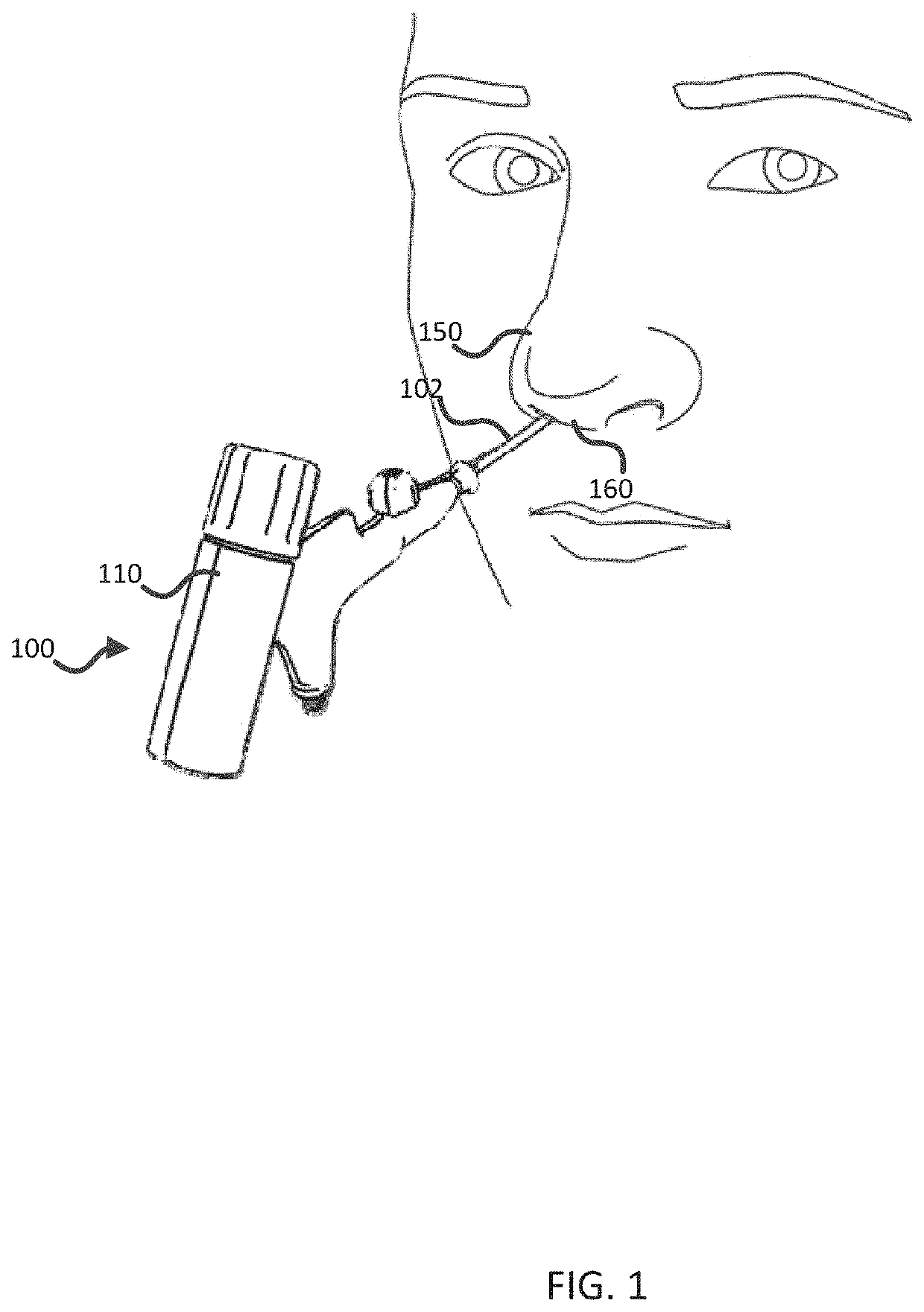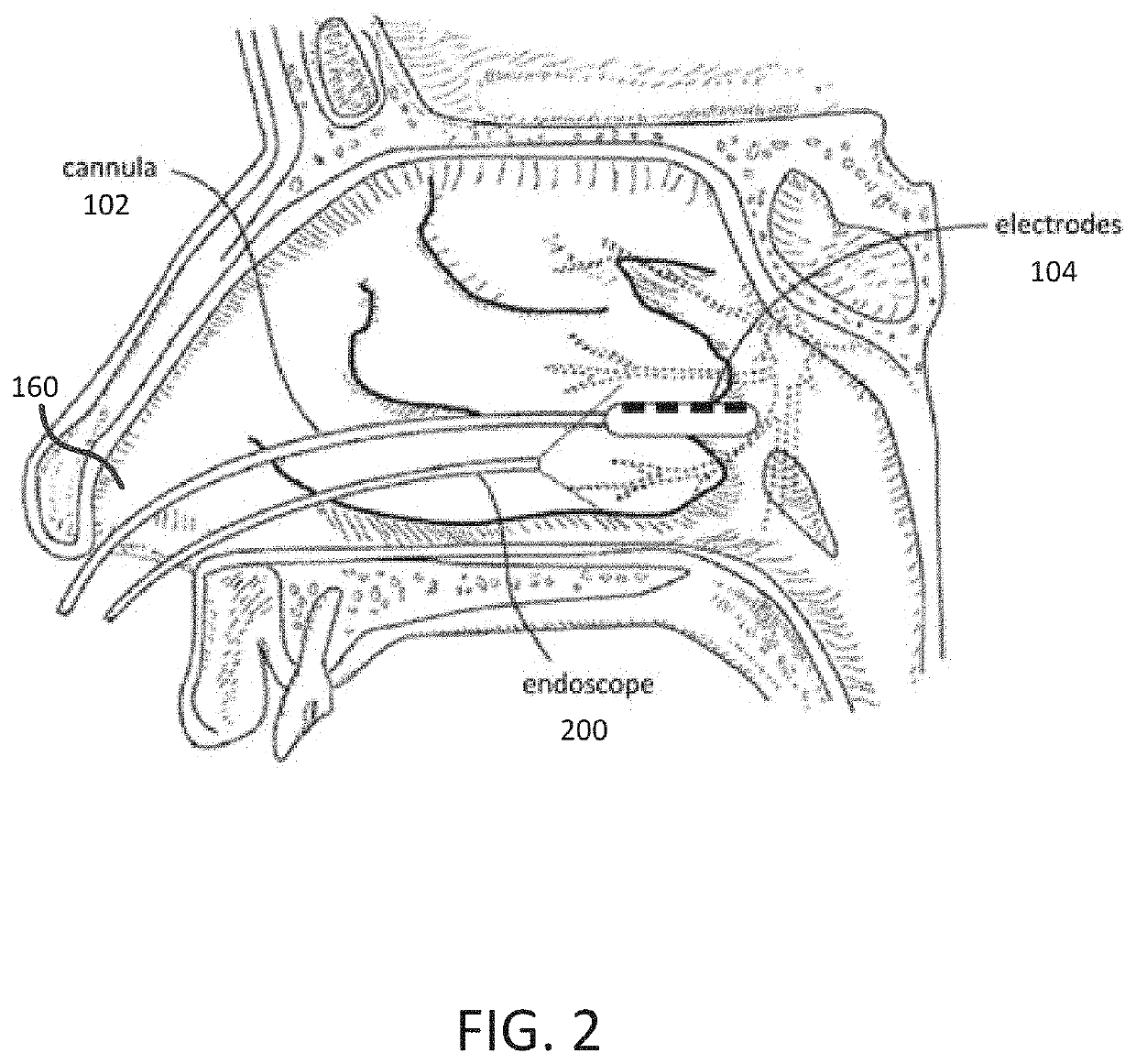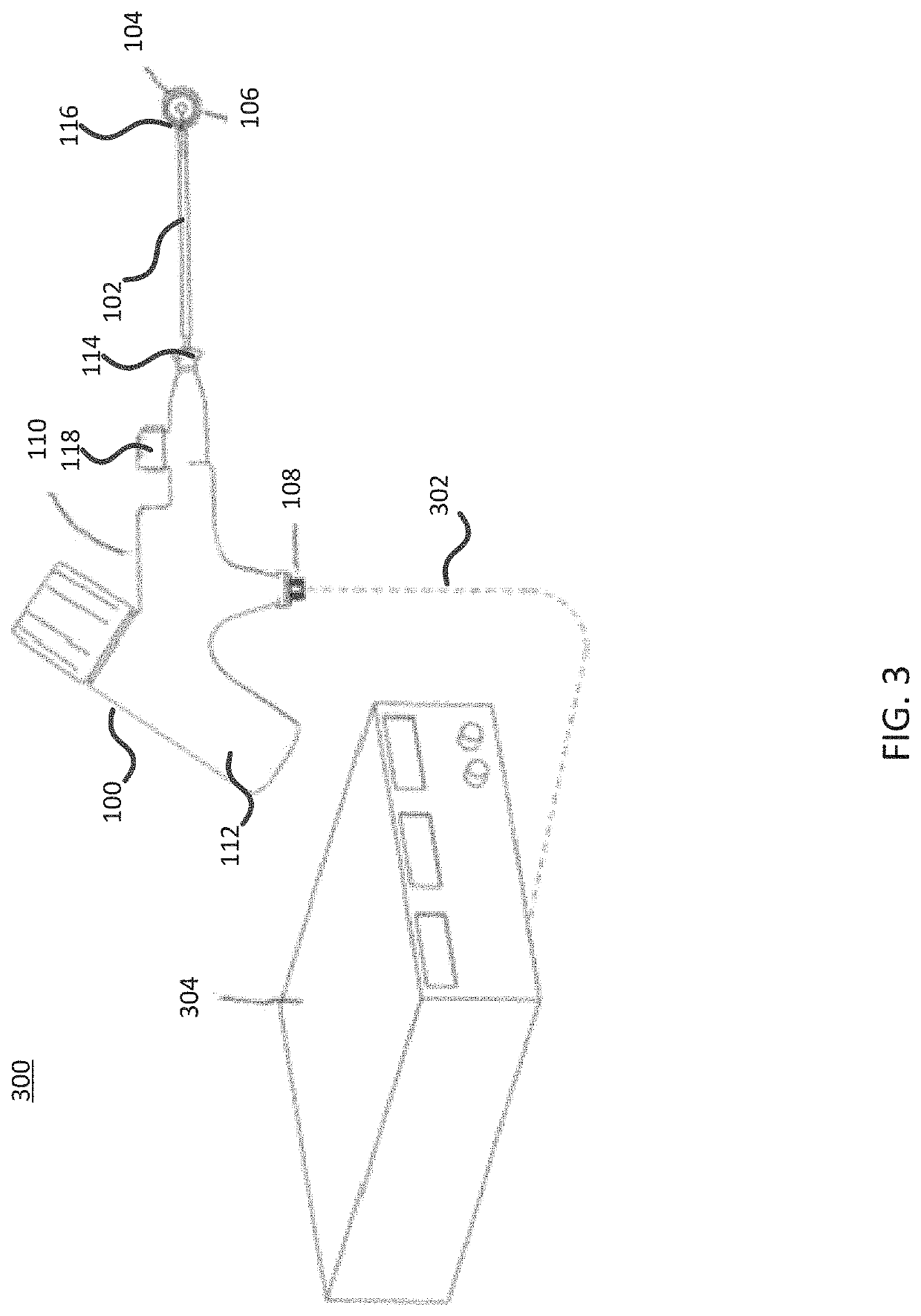Integrated nasal nerve detector ablation-apparatus, nasal nerve locator, and methods of use
a detector and nasal nerve technology, applied in the field of integrated nasal nerve detector ablation apparatus, nasal nerve locator, and methods of use, can solve the problems of increased infection rate, interference with life quality, removal or ablation of mucosal tissue including surface epithelial layer, etc., and achieve the effect of accurately targeting particular areas
- Summary
- Abstract
- Description
- Claims
- Application Information
AI Technical Summary
Benefits of technology
Problems solved by technology
Method used
Image
Examples
Embodiment Construction
[0060]In the following description, various embodiments of the present invention will be described. For purposes of explanation, specific configurations and details are set forth in order to provide a thorough understanding of the embodiments. However, it will also be apparent to one skilled in the art that the present invention may be practiced without the specific details. Furthermore, well-known features may be omitted or simplified in order not to obscure the embodiment being described.
[0061]FIG. 1 shows a device 100, in accordance with many embodiments. As can be seen in FIG. 1, device 100 may include a hand piece 110 and cannula or probe shaft 102 which is shown after it is inserted in the nasal cavity 160 of a subject's nose 150. Although device 100 will be described in further detail below, it can be understood that device 100 may be designed so that cannula or probe shaft 102 is long enough to reach a desired tissue location when hand piece 110 is placed outside of nasal ca...
PUM
 Login to View More
Login to View More Abstract
Description
Claims
Application Information
 Login to View More
Login to View More - R&D
- Intellectual Property
- Life Sciences
- Materials
- Tech Scout
- Unparalleled Data Quality
- Higher Quality Content
- 60% Fewer Hallucinations
Browse by: Latest US Patents, China's latest patents, Technical Efficacy Thesaurus, Application Domain, Technology Topic, Popular Technical Reports.
© 2025 PatSnap. All rights reserved.Legal|Privacy policy|Modern Slavery Act Transparency Statement|Sitemap|About US| Contact US: help@patsnap.com



